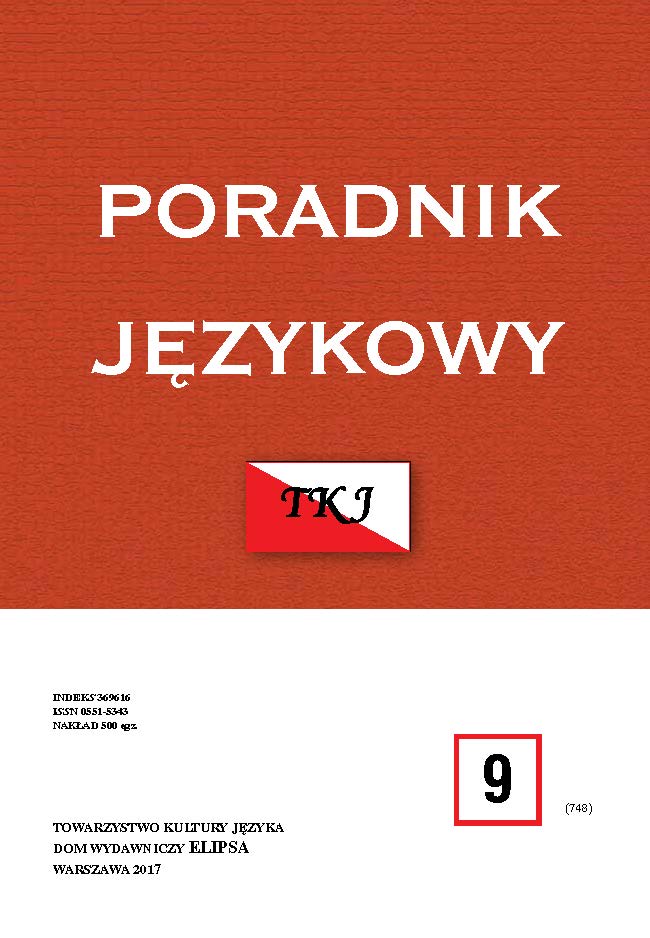OD REGULARNYCH POWTÓRZEŃ DO ZLEKSYKALIZOWANYCH REDUPLIKACJI. PROPOZYCJA KLASYFIKACJI TEKSTOWYCH ZJAWISK REPETYCYJNYCH
From regular repetitions to lexicalised reduplications. A proposition for classification of repetitive textual phenomena
Author(s): Adam DobaczewskiSubject(s): Theoretical Linguistics, Applied Linguistics
Published by: Dom Wydawniczy ELIPSA
Keywords: regular repetition; lexicalised reduplications; repetitive textual phenomena
Summary/Abstract: This paper aims to systematise repetitive phenomena, with a special focus on intra-phrase repetitions. The following are distinguished in this group: A) code repetitions (i.e. realising standards rules of the language system, in particular the syntactic one), including Aa) unit (lexicalised, i.e. with a set composition, e.g. kubek w kubek ‘peas in a pot’, nawet nawet ‘quite good’, cf. 4.1.1) and operational, i.e. forming series, cf. 4.1.2) and Ab) system-wide (motivated semantically, e.g. dzień po dniu (day by day), człowiek człowiekowi wilkiem (man is a wolf to man), cf. 4.2); and B) non-code repetitions (i.e. extralinguistically motivated realisations violating the standard syntax), including Ba) supra-systemic (accepted in usage due to a commonly recognised motivation, e.g. quasi-tautologies, such as Prawo jest prawem (The law is the law); Jestem, kim jestem (I am who I am) or clearly iconically motivated emphases such as dawno, dawno temu (long, long time ago); cf. 4.3) and Bb) extra-systemic repetitions (essentially unaccepted, motivated individually and tentatively, cf. 4.4). It is worth adding that it is only unit systems (Aa) that are language-specific (characterised of a given language system), whereas the system-wide (Ab) and non-code (B) ones, due to their nature, are quite easily translatable.
Journal: Poradnik Językowy
- Issue Year: 2017
- Issue No: 09
- Page Range: 63-75
- Page Count: 13
- Language: Polish
- Content File-PDF

